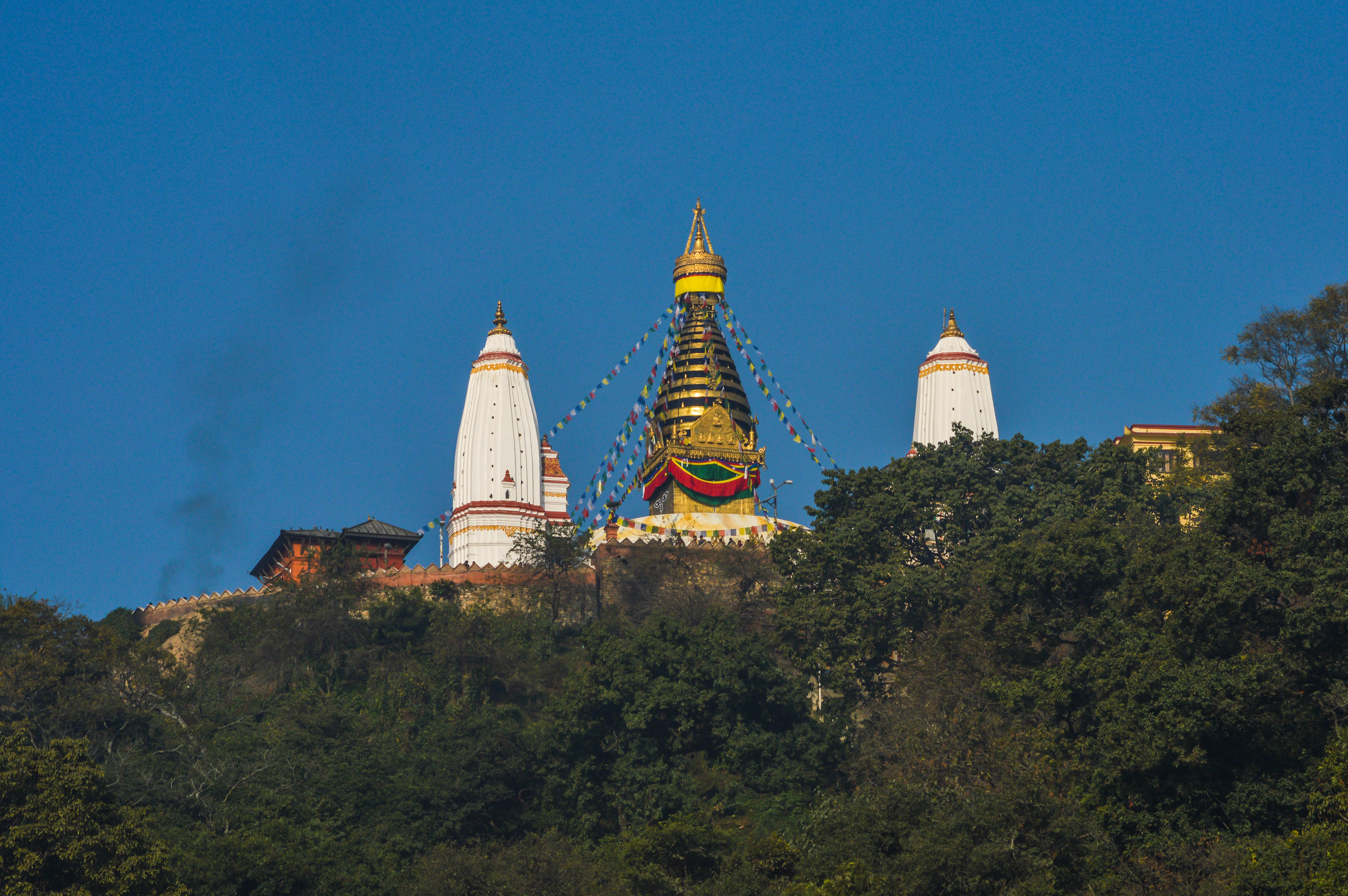Tiji festival of Upper mustang is a popular occasion, celebrates three days in the month of May once a year; presents historical and cultural significant of Tibetan Buddhism with its cultural performances.
Tiji festival is started to celebrate since 300 years ago in Mustang, also known as "The Chasing of the Demons" is believed of victory of good over evil, rooted rich tapestry of local legends, religious practices and communal gatherings.
The festival of Tiji, takes place in Lo Manthang, the walled capital of the ancient Kingdom of Mustang, which is a significant cultural and spiritual event in the region. Upper Mustang, where Lo Manthang is located, is a remote and historically rich area in the north-central part of Nepal, near the border with Tibet.
Tiji festival often involve traditional rituals, dance and ceremonies that reflect the spiritual heritage of the Lo- Mantahng. The festival serves as an important time for the local people to honor their traditions, connect with their spiritual roots, and celebrate their cultural identity.
Historical and cultural significance
In Vajrayana Buddhism, the term "Dorje" (Tibetan) or "Vajra" (Sanskrit) refers to a ritual object symbolizing the indestructible and powerful nature of the truth and spiritual force. According to mythology, Dorje, also known as a Vajrayana Guru, is a revered figure who battled against a demon threatening the ancient kingdom of Mustang, located in the Himalayas. By defeating the demon, Dorje was able to save the kingdom of Lo- Manthang from destruction.
As a result of his triumph and spiritual significance, Dorje is venerated by the Vajrayana Buddhist communities in the Himalayas as a protector. The ritual object called a Vajra (or Dorje in Tibetan) is used in ceremonies as a symbol of spiritual power and protection. It represents the firmness of spirit and the invincible power of enlightenment. The Vajra is considered one of the most powerful tools for invoking spiritual power and is central to many ritual practices within Vajrayana Buddhism.
The date of Tiji Festival in 2025
The date of Tiji Festival in Mustang, scheduled for May 24, 25, and 26 in 2025, is indeed a vibrant celebration filled with spiritual rituals and cultural performances. During this time, monks gather in front of the King's Palace in Lo Manthang, where they play traditional music, recite Holy Scriptures, and perform local dances wearing elaborate masks.
These dances often depict the triumph of good over evil, reflecting the festival's deep spiritual significance. The entire village participates in the celebration, creating a lively and sacred atmosphere as they walk around the village, honoring their ancient traditions and cultural heritage.
Festival Highlights
Ritual:
The Tiji Festival is rich with ceremonies and rituals that are central to its spiritual significance. Monks, dressed in elaborate traditional attire, lead the religious ceremonies, which include prayers, chants, and various rituals. These sacred activities are performed with great reverence, invoking blessings, protection, and spiritual purification for the participants and the community.
The rituals are deeply rooted in Vajrayana Buddhist practices, reflecting the ancient traditions and beliefs of the region. The ceremonies create a powerful spiritual atmosphere that resonates throughout the festival, drawing participants and observers into a collective experience of devotion and celebration.
Masked Dance:
The "chhams," or masked dances, are a highlight of the Tiji Festival and one of its most captivating attractions. Performed by monks, these dances are not only a visual spectacle but also carry deep symbolic meaning. The elaborate masks and costumes worn by the dancers represent various deities and mythological figures, and the performances are choreographed to depict the eternal struggle between good and evil. Accompanied by traditional Tibetan music, the chhams tell stories of divine intervention and the eventual victory of good forces over malevolent ones. The rhythmic movements, vibrant masks, and the powerful music combine to create an awe-inspiring display that captivates the audience. These dances are a crucial part of the festival's rituals, emphasizing the spiritual and cultural values that have been passed down through generations in the Mustang region.
Tibetan Buddhist Practice:
The Tiji Festival is a vivid display of Tibetan Buddhist traditions, showcasing the region's deep spiritual heritage. Integral to the festival are sacred texts, thangka paintings, and ritual instruments, each playing a significant role in the ceremonies.
- A: Sacred Texts: Monks recite ancient scriptures and prayers, invoking blessings and protection for the community. These texts are central to the spiritual rituals, guiding the festival's religious practices.
- B: Thangka Paintings: These intricate, hand-painted scrolls depict deities, mandalas, and scenes from Buddhist teachings. Thangkas are often displayed during the festival, serving as visual representations of the spiritual themes being honored and meditated upon.
During the Tiji Festival, one of the most striking visual elements is the display of a large thangka, which is a traditional Tibetan Buddhist painting. This particular thangka, painted with gold, is one of the largest and most revered, symbolizing the festival's spiritual grandeur. It is carefully hung in front of the King's Palace in Lo Manthang, serving as a central focal point for the festivities. - C: Ritual Instruments: The sounds of traditional Tibetan instruments, such as horns, drums, and cymbals, fill the air during the ceremonies. These instruments are not just musical; they are considered tools for invoking divine presence and enhancing the spiritual atmosphere.
Monk's Performance & Presentation
1st Day (The ceremony of Demon's defeat)
The Ritual of the Demon’s Defeat is a traditional ceremony associated with the Tiji Festival in Mustang, Nepal. It’s a dramatic reenactment of a mythological battle where the deity of the festival, Buddha, fights and defeats a demon to restore peace and harmony. The ritual features vibrant dances, music, and elaborate costumes, and it's a central part of the Tiji celebrations. This ritual symbolizes the triumph of good over evil and is an essential aspect of the festival's cultural and spiritual significance.
2nd Day (The Battle against Demon)
On the second day of the Tiji Festival, known as "The Battle against the Demon," the rituals intensify as the monks and performers reenact the most dramatic part of the Tiji myth. This day symbolizes the fierce confrontation between the deity Dorje Jono, a manifestation of Vajrakila (an important deity in Tibetan Buddhism), and the demon, who represents the forces of evil and chaos.
3rd Day (The victory, celebration and offerings)
The third day of the Tiji Festival is the culmination of the three-day event, marked by celebration, victory, and offerings. This day symbolizes the final defeat of the demon and the restoration of peace and harmony in the region. The rituals and ceremonies on this day are imbued with a sense of triumph and renewal.
Tour to Lomanthang (How to reach?)
Reaching Lo Manthang for the Tiji Festival is an adventure in itself, requiring a trek through the breathtaking landscapes of the Annapurna and Dhaulagiri ranges. This journey offers trekkers an opportunity to experience the majestic beauty of the Himalayas up close, with stunning views of snow-capped peaks, deep valleys, and high-altitude deserts.
We take early morning flight to Jomsom from Pokhara offers spectacular Mountain views on the route. It is scenic 17 minutes mountain flight. Upon arrival in Jomsom airport our permits and documents are checked by Annapurna Conservational Area Project and we start to drive by jeep through rugged terrain along with Kali Gandaki River, offers best view of landscapes and territory. Due to high altitude, in single day we will not recommend to drive Lomanthang from Jomsom. We stop first day in kagbeni which is an ancient village with prehistoric monastery having sightseeing around.
Next day early in the morning, after breakfast, our special permit is checked in Kagbeni and we continue drive a head to Nepal Tiber border side through Chuksang, Chaile, Syangbohce, Ghami and Tsarang village. Within 2-3 days night stay in local lodge on the route, we finally reach in walled city of ancient kingdom of Lomantahng. We explore ancient caves, monastery, Chortens, stupa, River, desert and dramatic mountain vistas on the route from Jomsom to Lomanthang.
Conclusion
The Tiji Festival Tour plays a crucial role in preserving the cultural heritage of the Mustang region. It attracts not only locals but also international tourists and researchers interested in Tibetan Buddhism and Himalayan cultures. Let explore Tiji festival tour 2025 with us.



